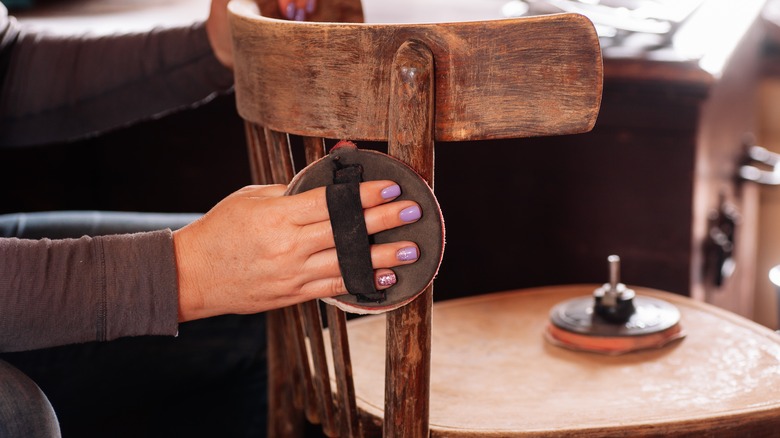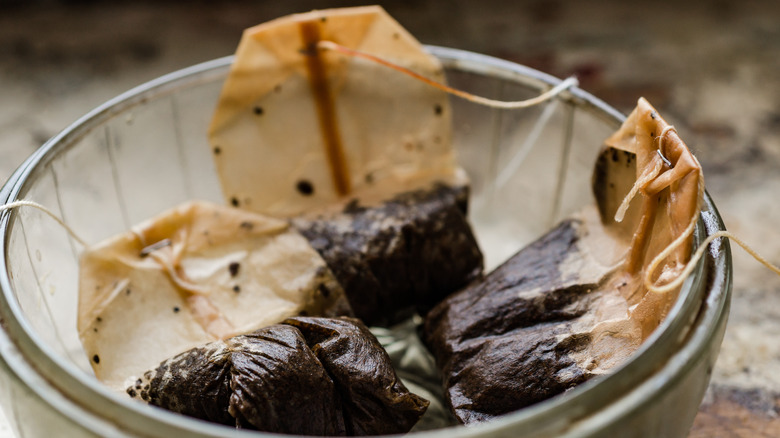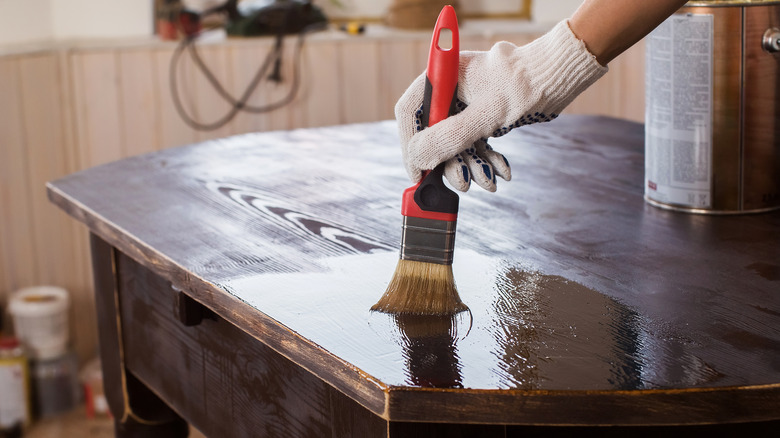The Secret Ingredient That'll Amp Up Tired Wood Furniture
Has your once stunning wooden furniture taken on a dull, lifeless appearance? Over the years, the luster and sheen that initially captivated you might have faded, and now you're left with what can only be described as a tired, worn-out manifestation of your furniture's former self. Anyone would stretch their imagination far and wide for a solution. Maybe you've even considered tossing out old for new. But hold that thought because the trip from drab to fab is shorter, more straightforward, and more affordable than you think. Enter tea bags.
Yes, the secret ingredient for restoring your old wooden furniture is lying quietly in your kitchen, masked by its everyday functionality. Tea, rich in tannins, emulates the natural woody hue of your furniture, staining the dull and worn-out areas for an authentic makeover. By using this household staple, you're saying a big "no" to spending on fumy wood stains or even new furniture.
The benefits of staining wood furniture with tea extend beyond affordability. Natural and organic, tea is an eco-friendly option for revamping old pieces. However, the type of tea you select for this project can mean a significant difference. Generally, black tea boasts higher tannin content than green tea, thus casting deeper, more prominent stains on woodwork.
How to restore old wood furniture with tea bags
Begin this journey by cleaning your wood furniture. Here, stick with the basics: soapy water and a sponge. Scrub gently, unearthing the charm hidden by layers of grime that time has generously deposited on your piece. After you're cleaning, let the piece air-dry in readiness for the ensuing stage. Next, bring out 220-grit sandpaper to sand the remnants of past mishaps, from varnish mistakes to embedded filth. An artist never leaves their work in disarray, so carefully wipe off the dust after sanding.
Next comes the tea trick. Toss four to six tea bags into a liter of boiling water. Let the water cool down, allowing the tannins to dissolve completely. Generally, the tea's darkness will depend on the quantity of tea bags used and how long you let them steep. Mind the leaves, though; strain your concoction to ensure a clear infusion. From there, put on your gloves and submerge your soft cloth or rug into the tannin-rich elixir.
Make sure to wring out the excess; the cloth should be damp, not dripping wet. Next, caress your furniture with the tea-moistened cloth, letting the tannins permeate and condition each grain of the wood. You might need to repeat the tea treatment a few times to achieve the desired results. However, allow each layer to air-dry (or blow-dry it) before welcoming the next.
Caveats for staining old wood furniture with tea
Unsure how your wood furniture will react to this traditionally delightful drink? Play it safe. Conduct a patch test on a discreet section and see how the wood responds. The temptation to skip sanding and instead jump directly into the rejuvenation process can't be overlooked. But let's spare a moment for the fact that our furniture pieces often bear a finish or sealant. Without good sanding, the sealing forms a barrier that will curtail the result you desire. Beware of soft, porous woods, too: a scene featuring a pine can turn splotchy due to uneven stain absorption. Enter the superhero — pre-stain conditioner, perfecting the stage for a more uniform and visually appealing finish.
For the grand finale, we recommend one to two coats of sealant. It shields the final look without stealing the limelight from your revitalized piece. A water-based polyurethane fits the bill here. If you are worried that the sealant could mess up the tea-stained finish, apply shellac as a priming performer and let it dry, followed by a light sanding. Then, wipe off the dust and smoothly layer on three coats of the polyurethane sealant, grandly closing the curtains on your successful furniture restoration show.


